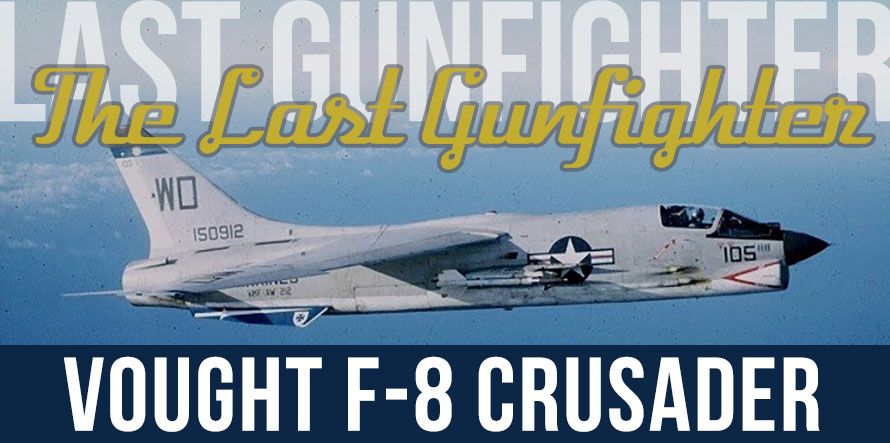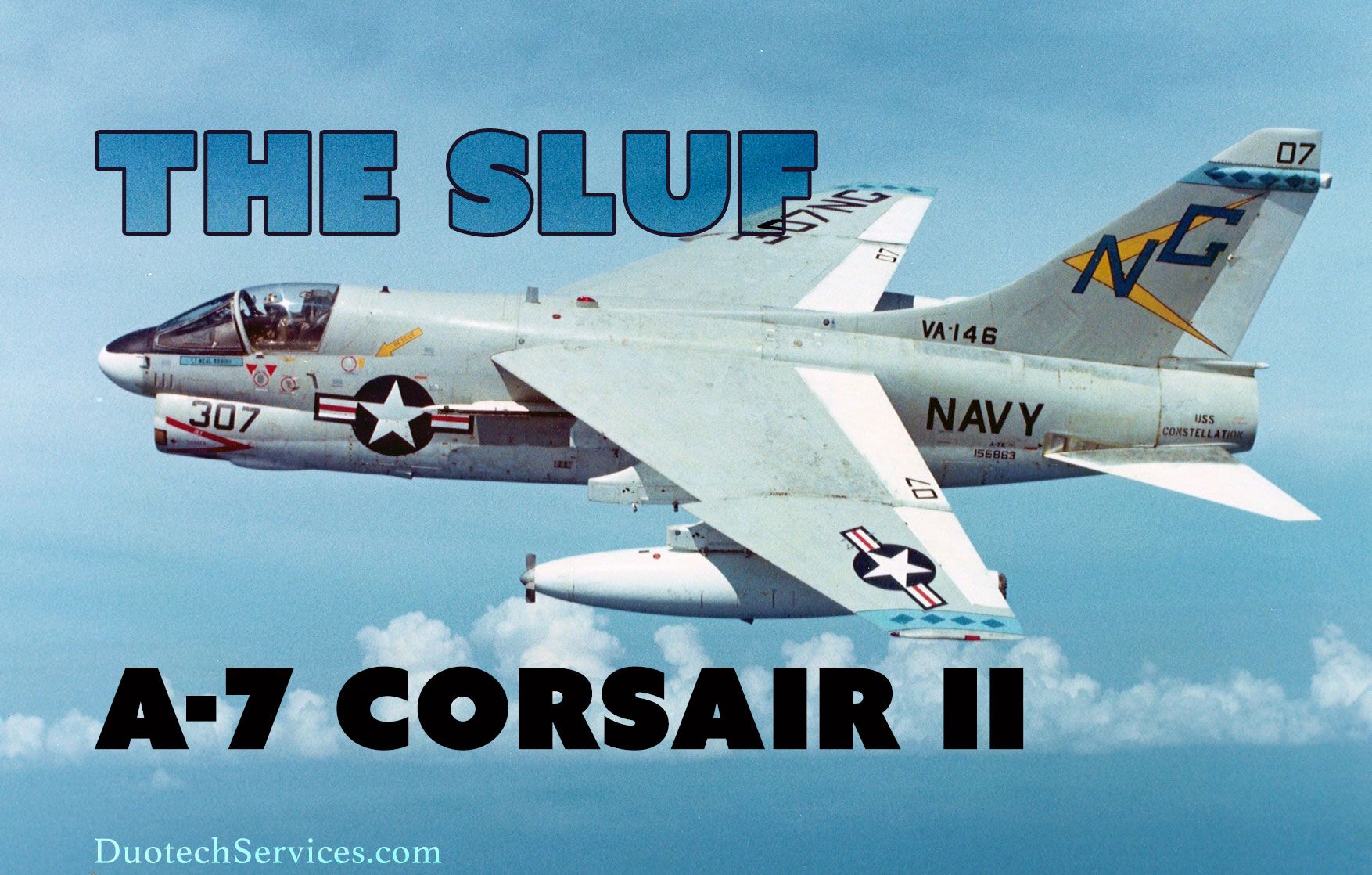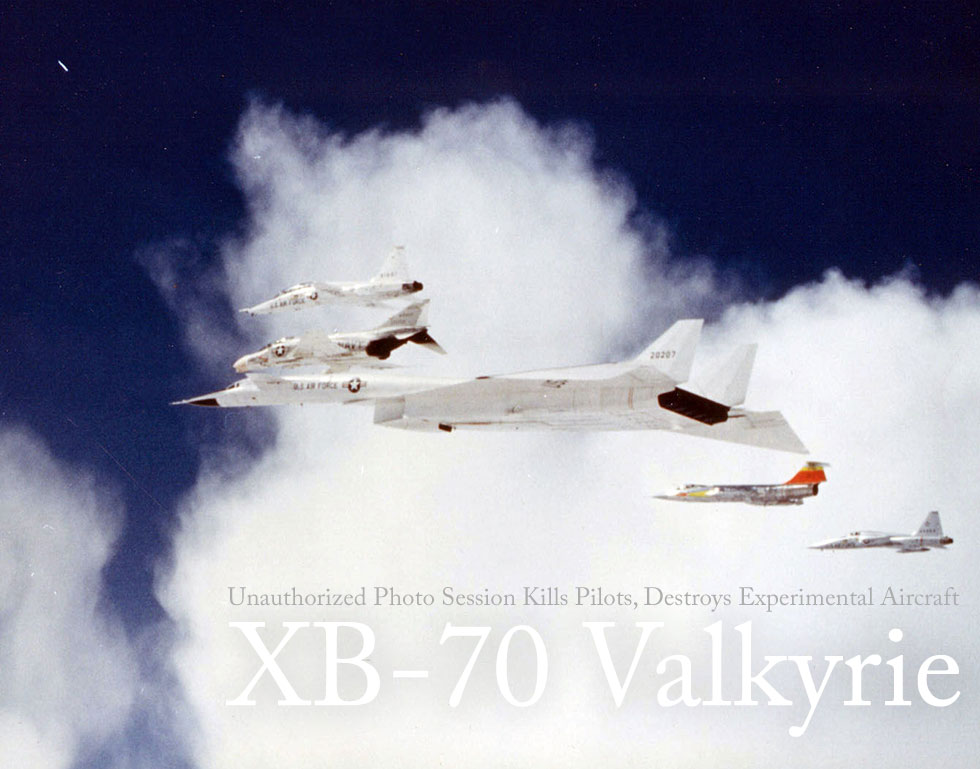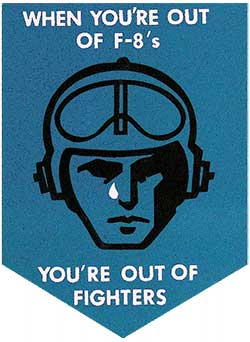 was the F-8’s more widely accepted title. Its primary weapons were four 20 mm Colt Mk 12 Cannons, but it had hardpoints to carry air-to-air missiles and rockets.
was the F-8’s more widely accepted title. Its primary weapons were four 20 mm Colt Mk 12 Cannons, but it had hardpoints to carry air-to-air missiles and rockets.Powered by a single Pratt & Whitney engine the F-8 could reach a maximum speed of Mach 1, and a rate of climb of 27,200 ft/min. The Crusader set speed records almost immediately. In 1956 it became the first operationally equipped jet to exceed 1,000 MPH. In 1957 Major John Glenn flew an F-8 coast-to-coast, from California to New York, in just under 3 hours and 23 minutes.
Though the Crusader would fly hazardous low level photo reconnaissance missions over Cuba during the Cuban Missile Crisis, it served predominantly during the Vietnam War. The Crusader was fast, agile, and extremely versatile. Its combat effectiveness against North Vietnamese pilots in their MiG-17s earned the F-8 another nickname, “The MiG Killers.” At 19:3, it had the best kill ratio of any aircraft in the fight over Vietnam. The pilots and their aircraft were so convincingly superior to the MiGs and their less than stellar NVAF pilots that a US Navy pilot scored a dogfight victory without firing a shot. In May of 1967, when faced with a head-to-head fight with a Navy F-8 Crusader, a MiG-17 pilot punched out, blowing his canopy and ejecting, before the Naval Aviator could fire his AIM-9C Sidewinder.
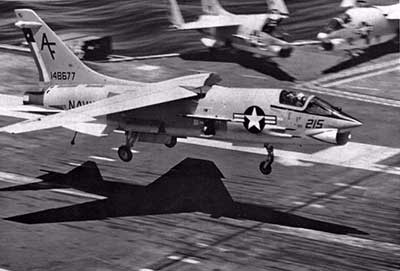 The F-8 may have been the fastest in its time, but it was also very tough to handle during landing and takeoff on a carrier. It suffered from yaw instability, pitching the aircraft back and forth during takeoff, sending some craft into the sea immediately after a launch. This was corrected by adding ventral fins added under the rear fuselage. With a wing that could be raised the F-8 could take off and land at slow speeds. If any damage occurred that restricted the use of this variable-incidence wing, the pilot would need to land at speeds in excess of 200 knots to avoid a tail landing. The front nose gear assembly sat behind the pilot, making it further difficult to maneuver on the deck of the carrier. These difficulties in operating the jet gave it another name, “The Ensign Killer.” Of the 1,261 Crusaders produced and sent to the fleet, 1,106 were involved in mishaps. Due to their performance in the skies, these fighters were still loved by their pilots despite this high mishap rate. U.S. records indicate that only three of the Crusaders were lost in aerial combat.
The F-8 may have been the fastest in its time, but it was also very tough to handle during landing and takeoff on a carrier. It suffered from yaw instability, pitching the aircraft back and forth during takeoff, sending some craft into the sea immediately after a launch. This was corrected by adding ventral fins added under the rear fuselage. With a wing that could be raised the F-8 could take off and land at slow speeds. If any damage occurred that restricted the use of this variable-incidence wing, the pilot would need to land at speeds in excess of 200 knots to avoid a tail landing. The front nose gear assembly sat behind the pilot, making it further difficult to maneuver on the deck of the carrier. These difficulties in operating the jet gave it another name, “The Ensign Killer.” Of the 1,261 Crusaders produced and sent to the fleet, 1,106 were involved in mishaps. Due to their performance in the skies, these fighters were still loved by their pilots despite this high mishap rate. U.S. records indicate that only three of the Crusaders were lost in aerial combat.
In the latter part of the 1960s air combat over the skies of Vietnam would require more dependence on air-to-air missiles, and use of beyond visual range radar. Because of this the F-8 Crusader would be replaced by the more versatile F-4 Phantom to perform air superiority as well as ground attack missions.
This Jet Friday we celebrate the F-8 Crusader, an aircraft so dominate in air-to-air combat that an enemy pilot preferred to eject prior to engagement to avoid a head-to-head fight. Please watch the video below to learn even more about the F-8 Crusader. Have a great Friday!

